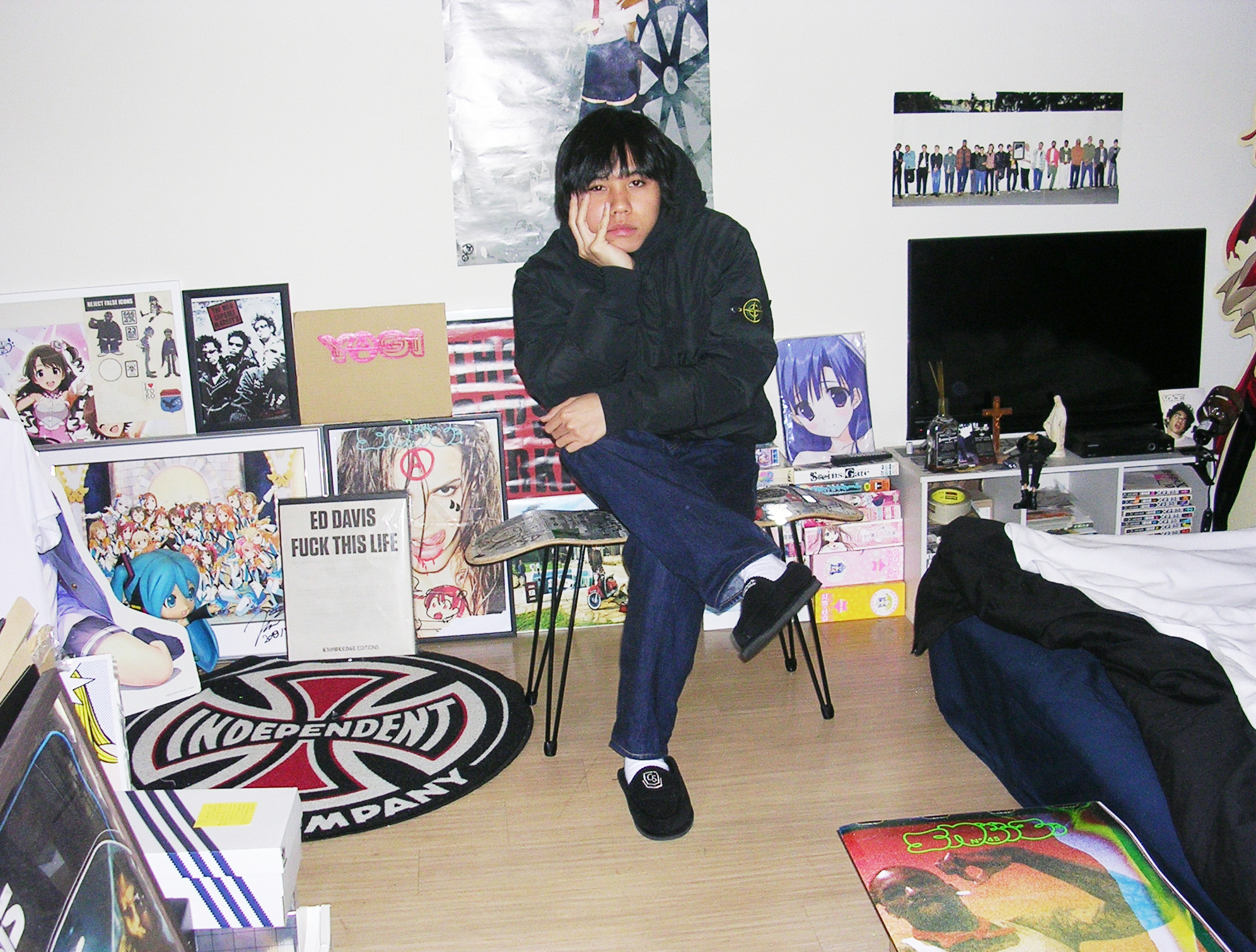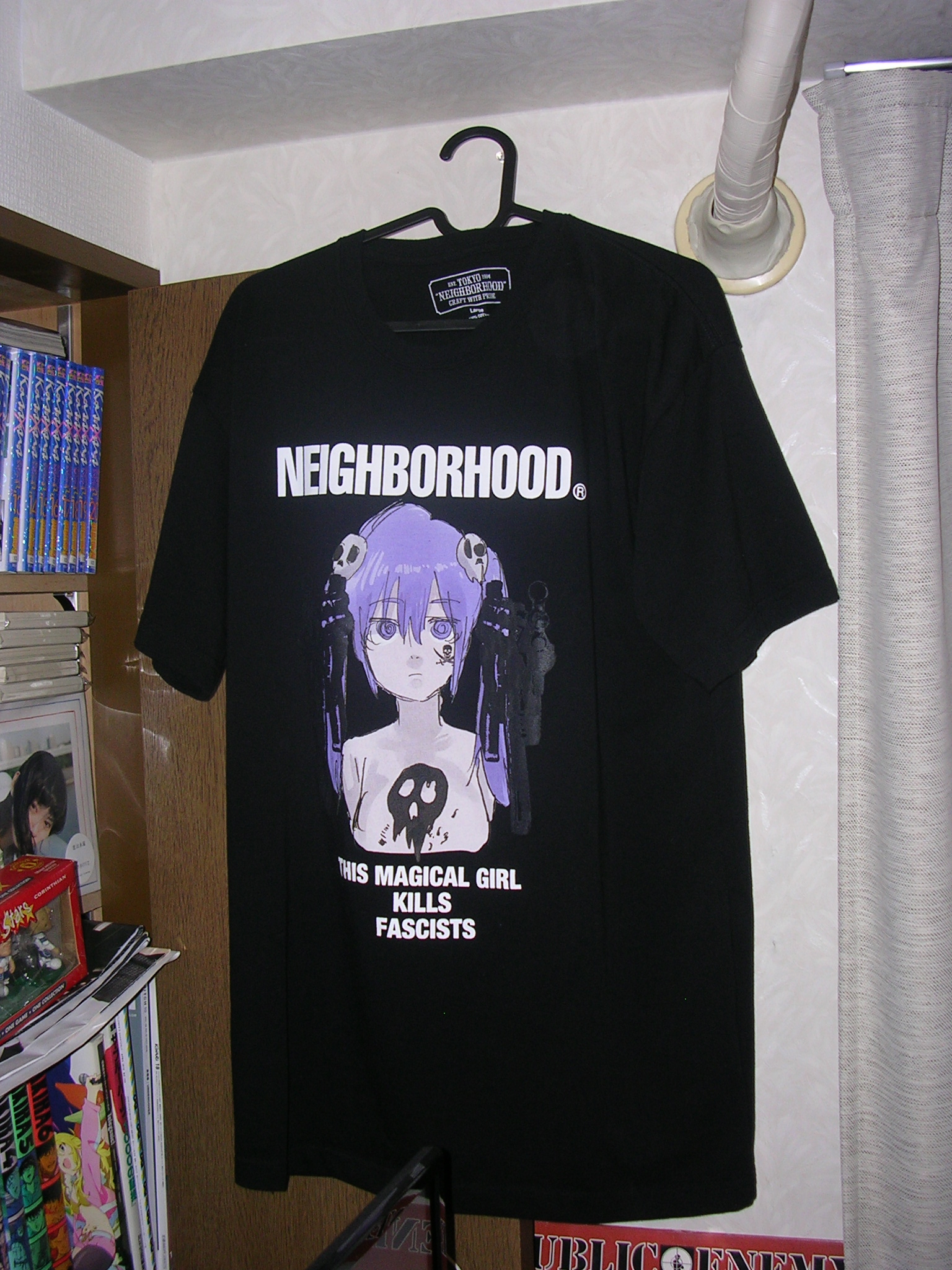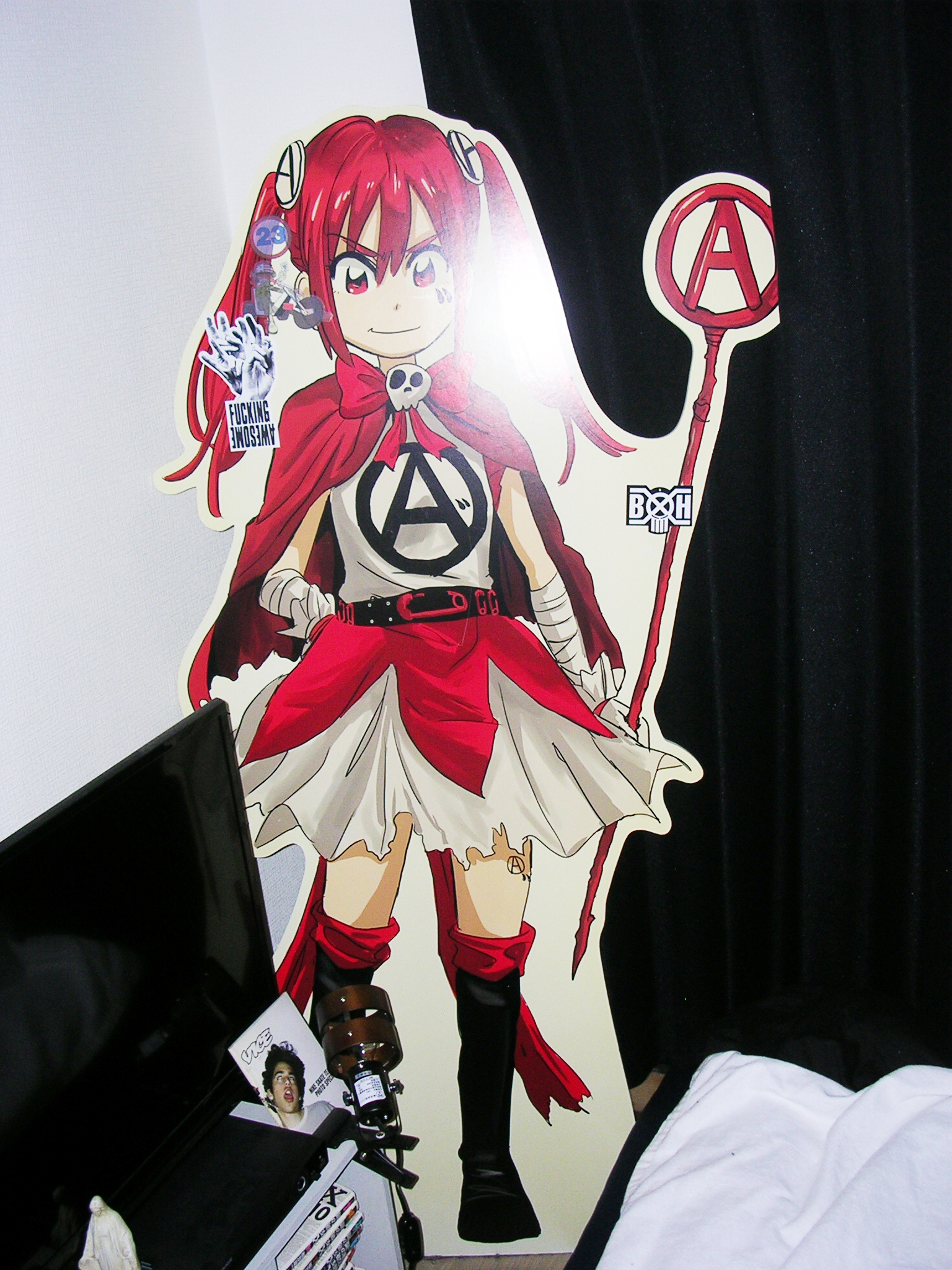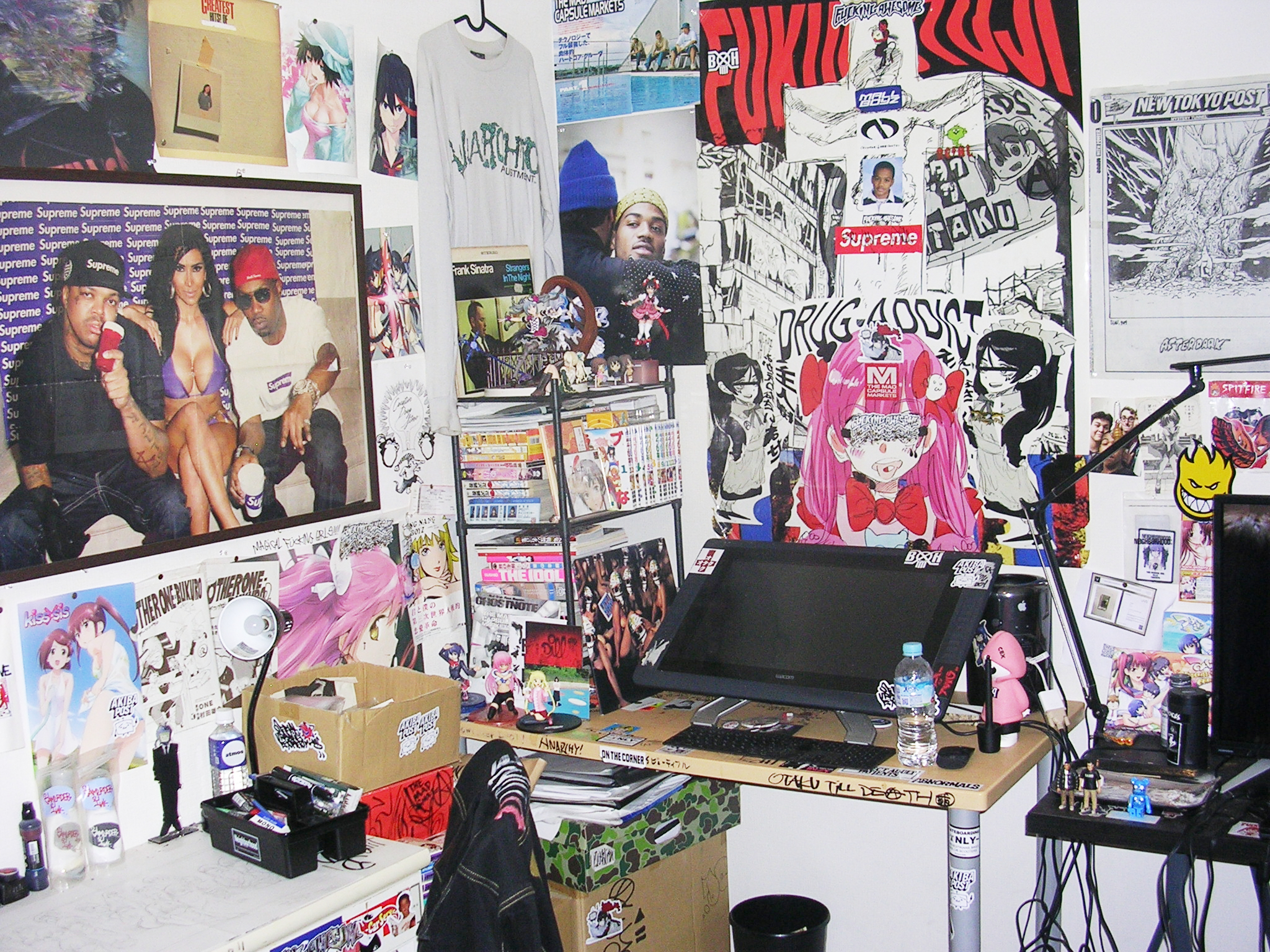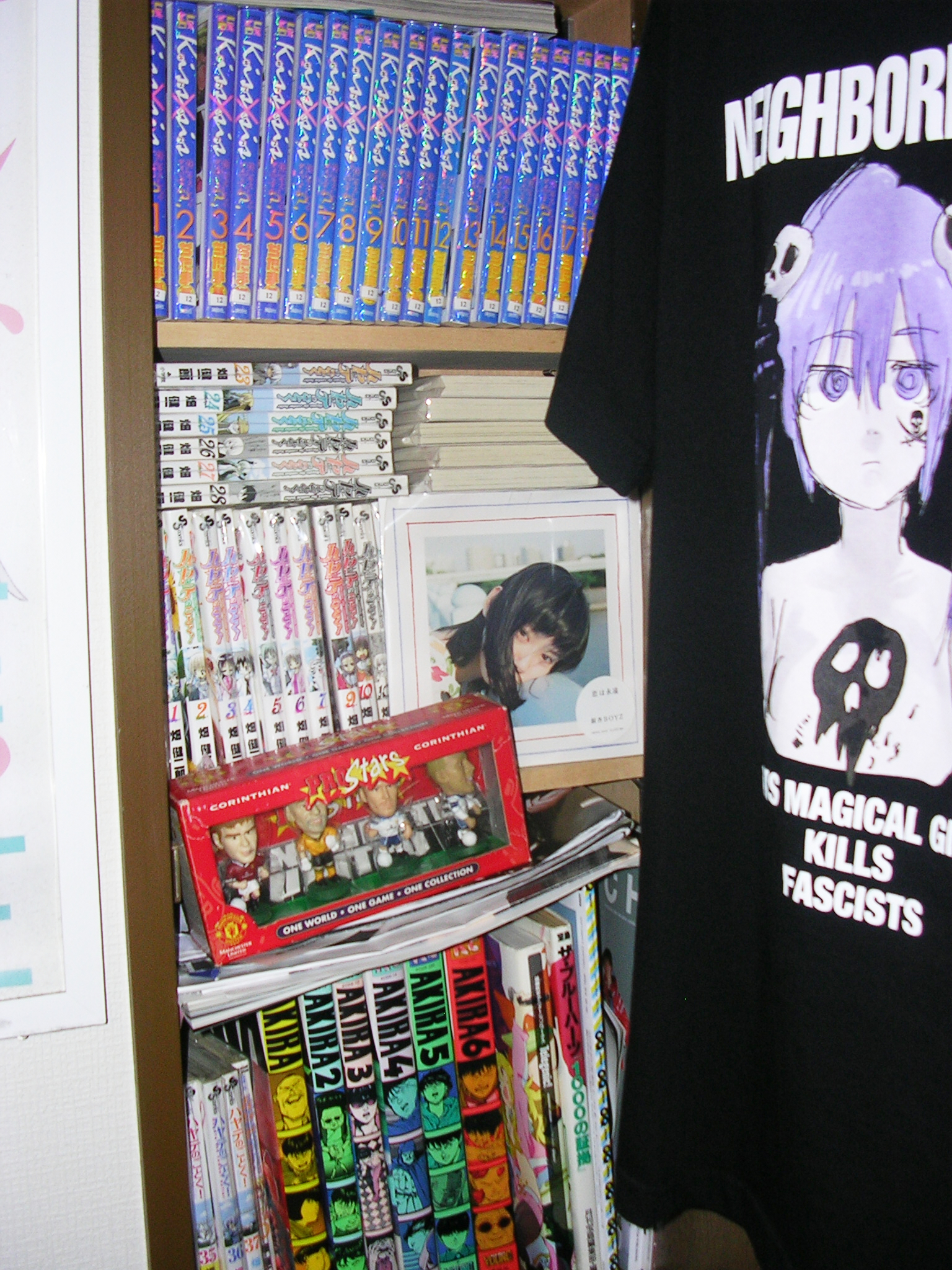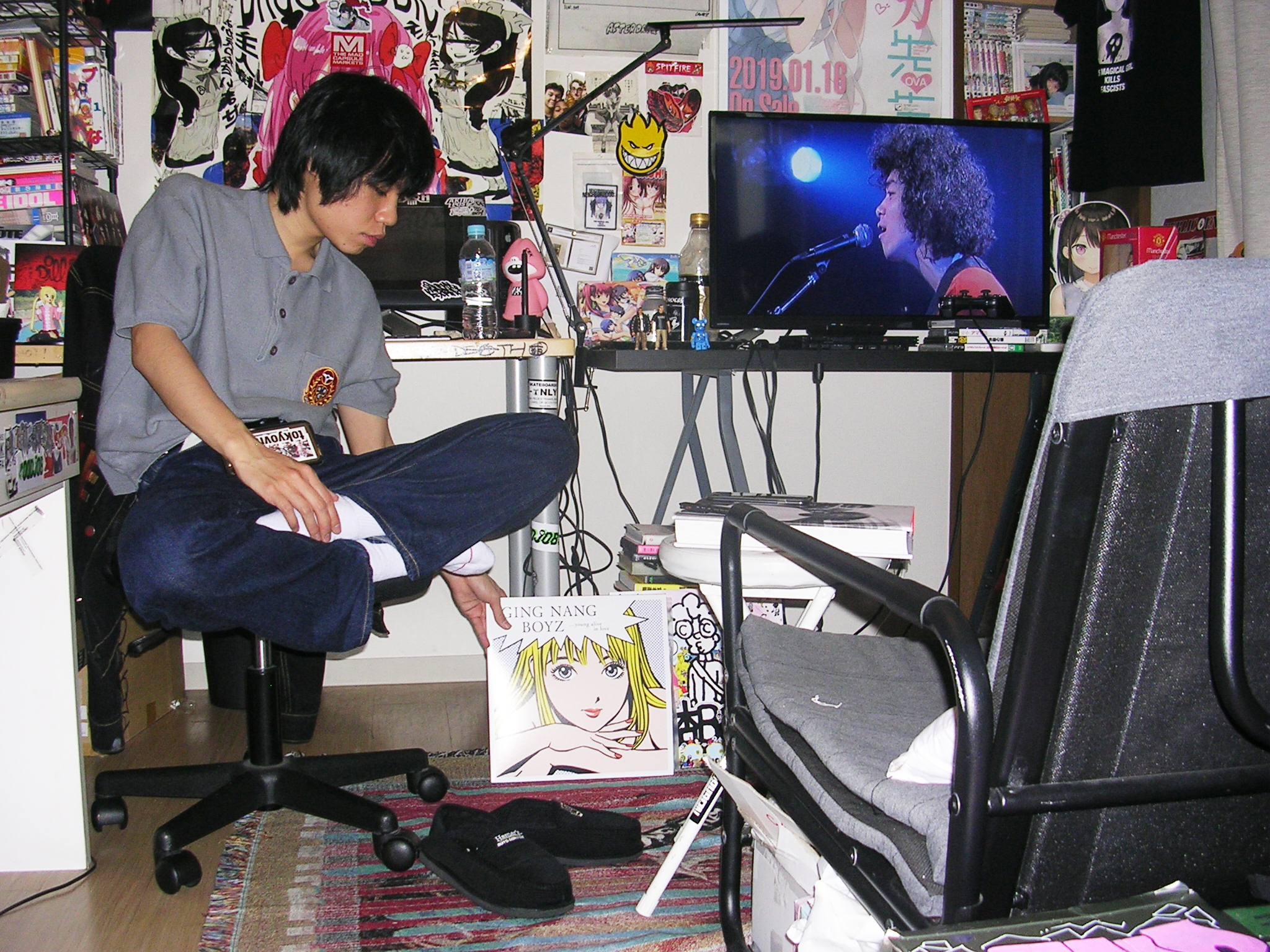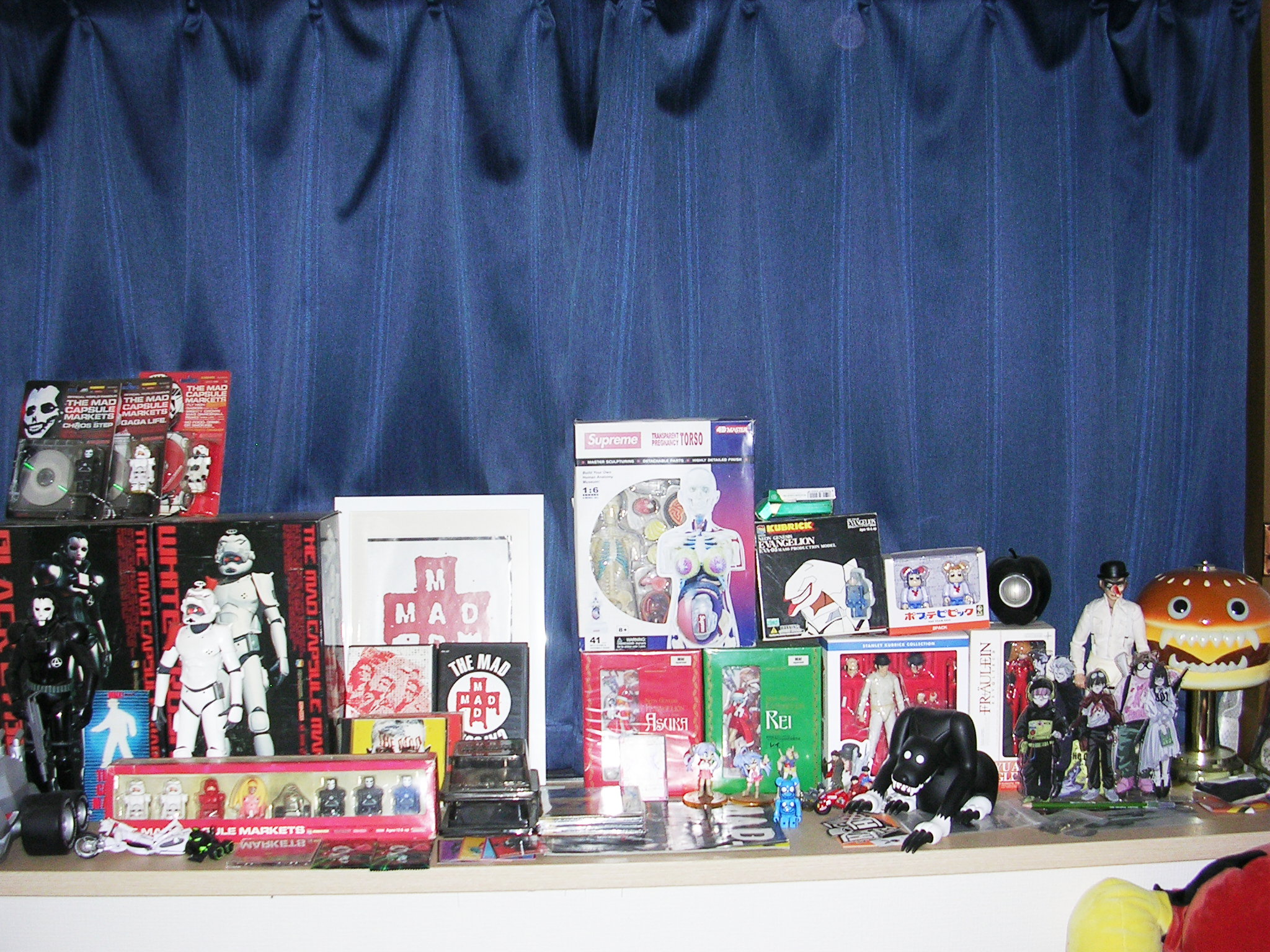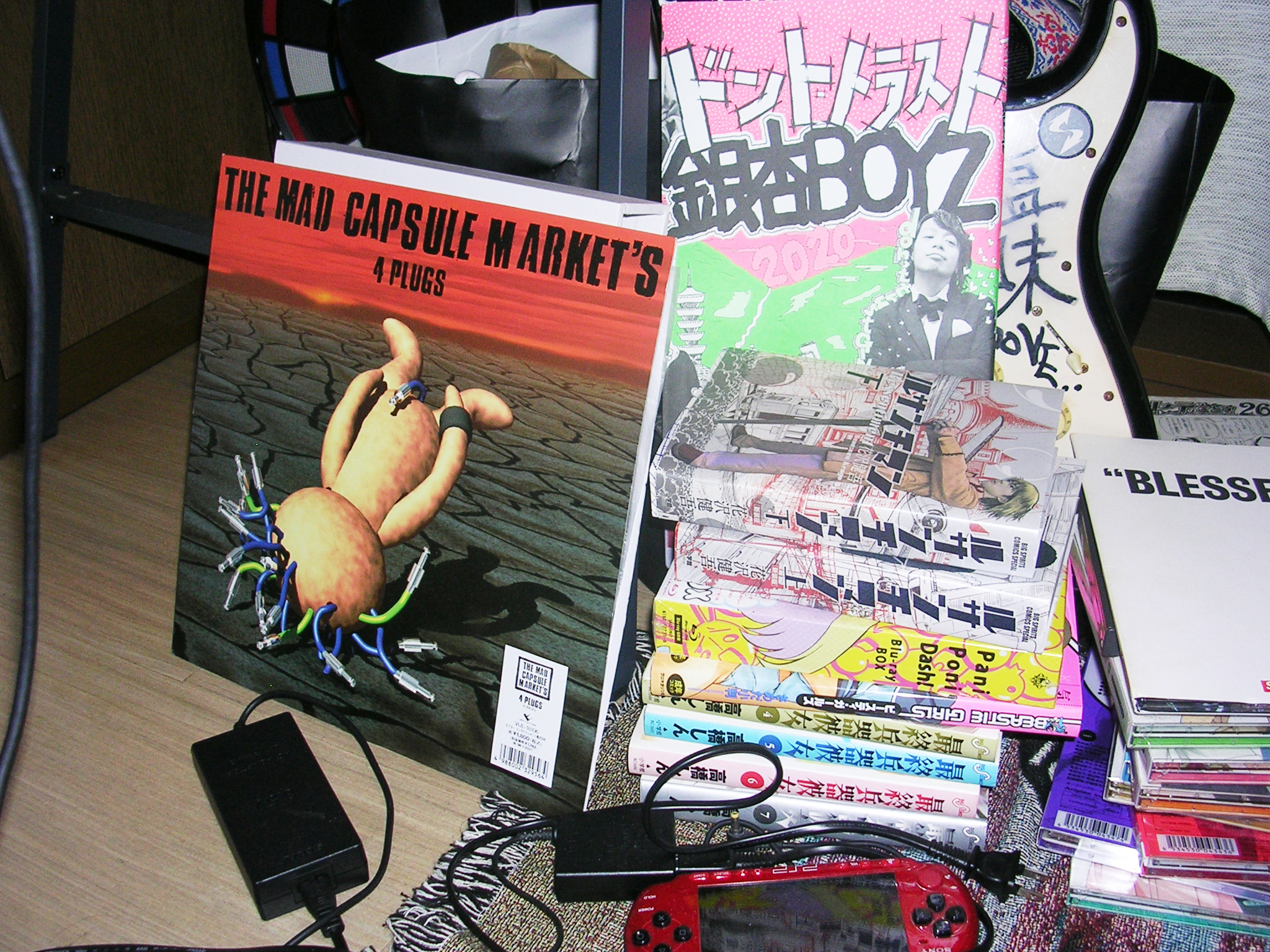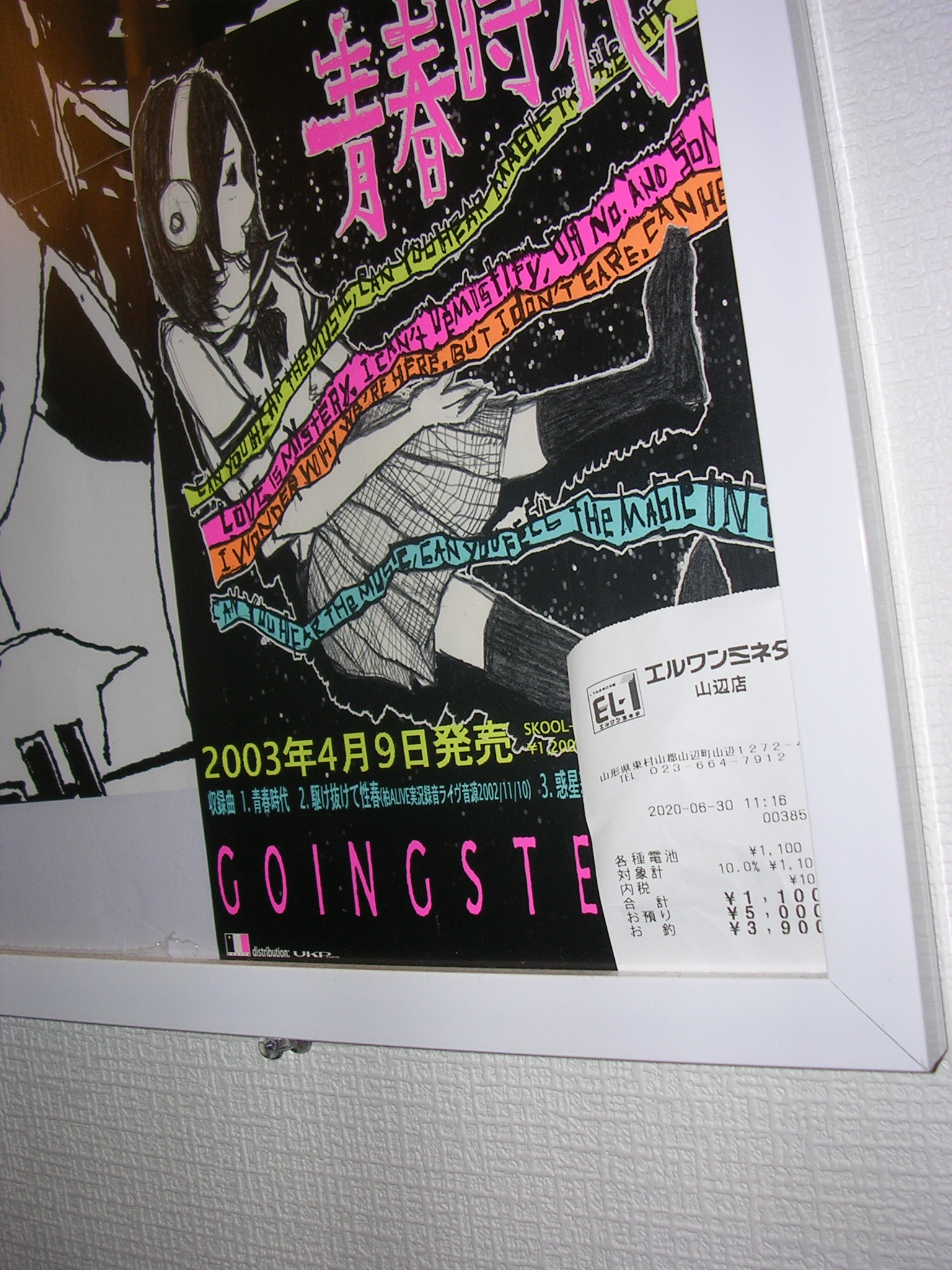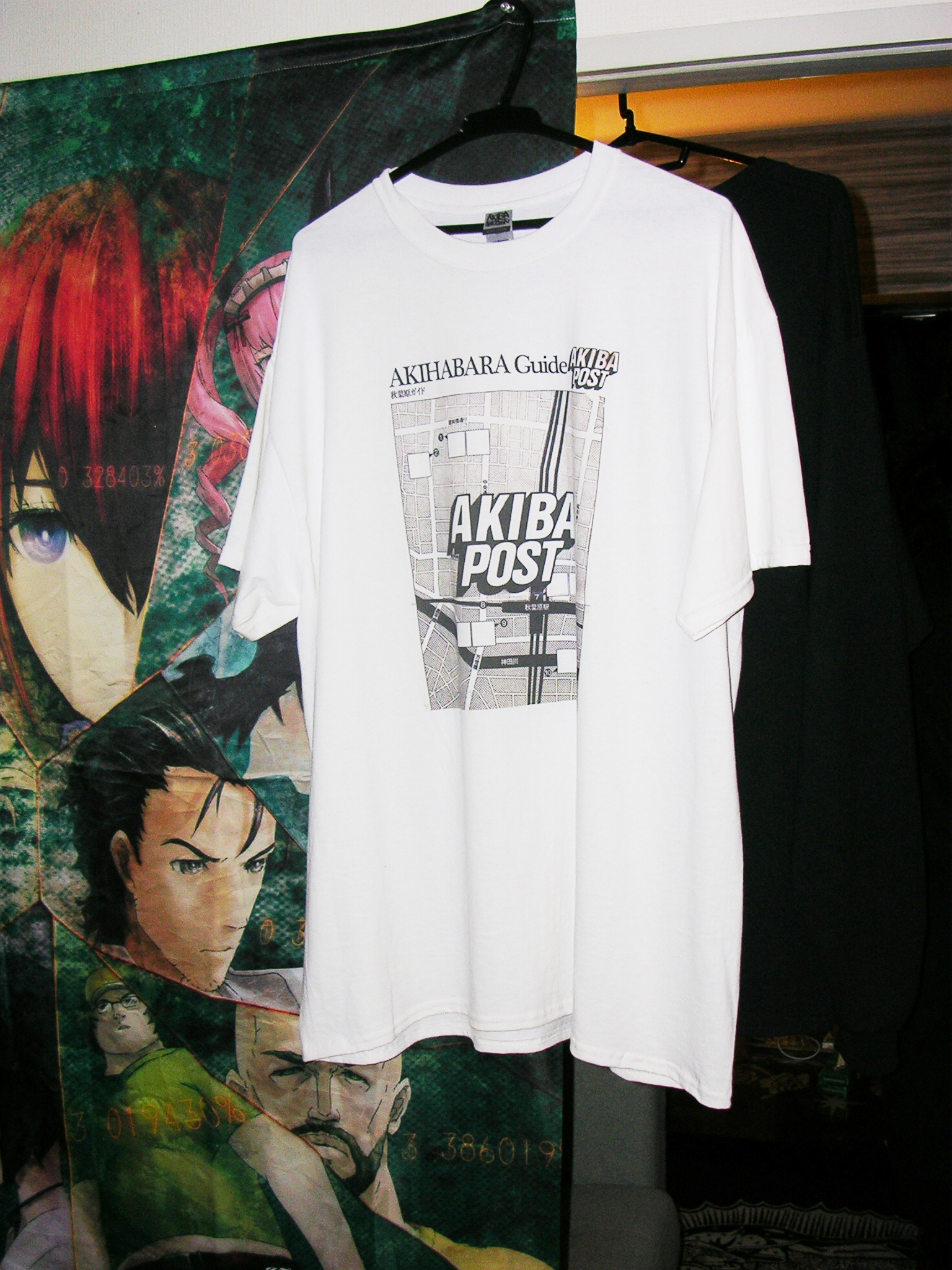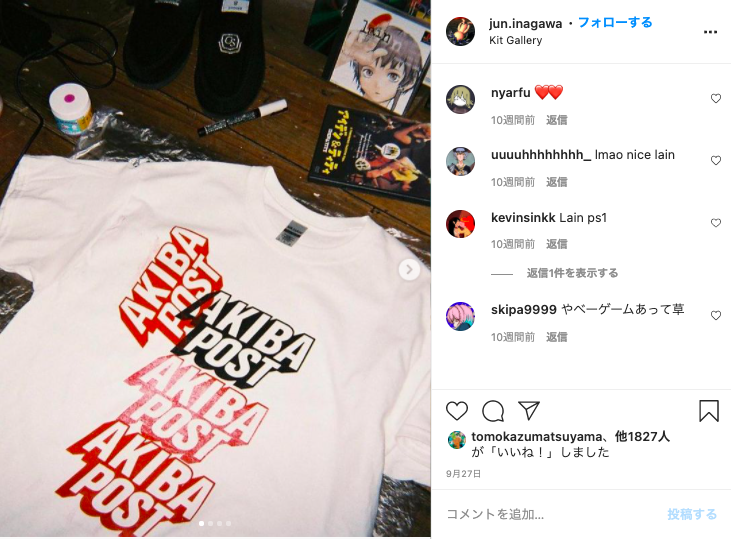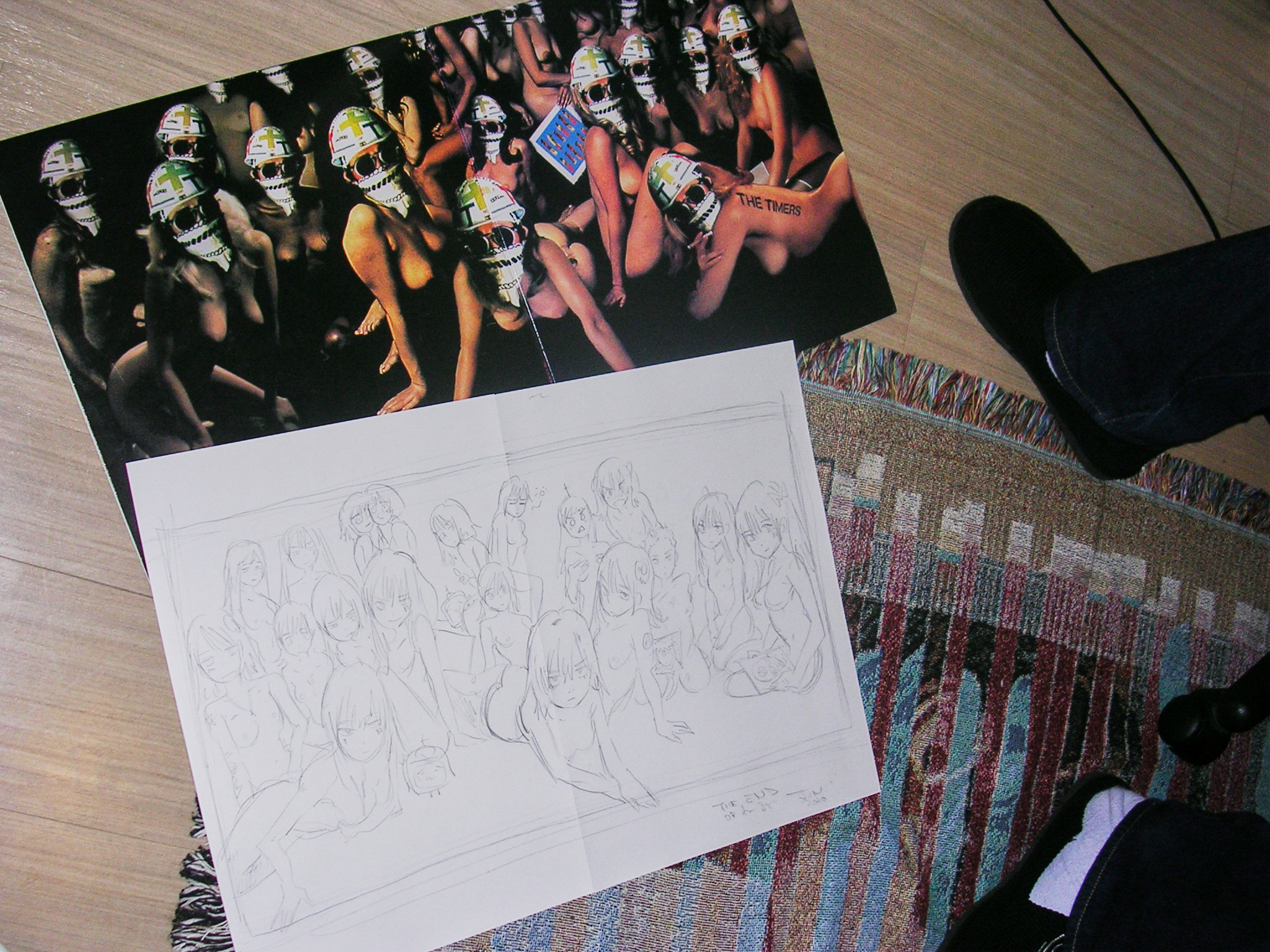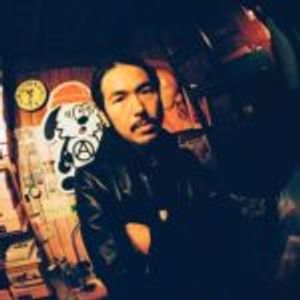With his unique take on manga illustration, JUN INAGAWA works across a variety of fields; from collaborating with brands and artists to hosting solo exhibitions and partaking in other projects. Chances are, you have come across his manga or illustrations online at least once. He is unapologetic about his otaku-culture aesthetic. However, his work has a distinct taste from manga associated with Akihabara, which is usually attached to the otaku archetype. The 21-year-old artist is currently based in Tokyo but spent his teenage years living in San Diego. During his time there, he developed a close relationship with the skate culture in Los Angeles and first became interested in drawing manga. What is JUN’s understanding of otakus, and what shaped him to be the artist he is today? We got down to the root of it all.
“Devoting myself to what I like”
――You’re very active as an illustrator and manga artist, as seen in your numerous collaborations with different streetwear brands. I was personally surprised to see you teaming up with Neighborhood. You’re currently 21 years old, and it has been a few years since you’ve been based here in Tokyo. What do you think about where you are today?
JUN INAGAWA (Hereinafter JUN): To be honest, I haven’t been capable of keeping up with everything. It doesn’t feel like I worked with Neighborhood. Like, “did I actually collaborate with them?” I would go to their store to purchase their incense chambers, and luckily enough, I got introduced to Takizawa-san (the CEO of Neighborhood). He said, “let’s do something together,” and one thing led to another. In the beginning, I was worried if I was the right fit for them because they had never released products with anime girls on them before. But when I handed my design to them, Takizawa-san liked it, partially because of his daughter’s love for anime. The timing was just right. The experience was so valuable for me, and I am so grateful. I’ve collaborated with other brands too, but again, it feels surreal. All I do is draw in my room and send the data from my computer to the other person, so it never feels like, “I did it!” Even if people compliment me, I can only reply with “huh, really?” (laughs).
――You’re truly one of the most prominent young artists in Tokyo right now.
JUN: Really? When I think of the current generation, I think of people like YouthQuake, tokyovitamin, and Creative Drug Store. I bet they’re going to become legendary in Tokyo, but it’s nice because they do what they do without considering that. They would make music or whatever they wanted with their friends, and then the older generation and other people in the scene started taking an interest in them. That’s how they became well known, yeah? In my case, you can say collaborating with Neighborhood and designing the artwork for BiSH helped me get my name out there. I think we’re going to see more and more people express themselves authentically. Also, I don’t draw because I want to be popular in the scene; I’m just devoting myself to what I like. I have my universe, and my art and thoughts exist in said universe. Even if someone asks me to create something, I never compromise my artistic universe and my standards. I only work with brands and artists I know about well and sincerely think are cool.
Drawing girls who are honest with themselves
――There are quite a few girls in your artwork and collaborations. The magical girls (an anime and manga category of young girls who use magic to overcome conflict) you frequently post on your Instagram represent you well as an artist. Do they have a backstory or background?
JUN: There’s no specific backstory or anything, but you know how most people depict magical girls as these powerful and perfect ideals? I started drawing them because I thought it was better to have magical girls who possess a more human quality and are true to themselves. Before long, these characters were smoking and doing drugs. Whenever I would watch anime featuring magical girls with a strong sense of doing what’s right for others, I would assume weird things about them: “it doesn’t matter if they’re cute because they do bad things in the dark.” So, I decided to draw magical girls with their bad side out in the open. It’s not like I have a message I want to convey through these characters. Nothing deep. I’ve always enjoyed watching anime with girl protagonists and drawing girls, so it’s just an extension of that.
――What anime and manga have you grown up consuming?
JUN: In terms of magical girls, Puella Magi Madoka Magica was popular during my time. Additionally, there’s an anime called Bludgeoning Angel Dokuro-Chan, which is a bit grotesque. This anime is similar to my worldbuilding. I wanted to draw these cute but violent girls who listen to and act on their instincts. Which explains why the magical girls I draw are true to themselves. I have never thought about this so intensely before (laughs).
――When did you start liking anime and manga?
JUN: I started liking them from elementary school, but I got into anime and manga in middle school. I especially loved the manga series, Kissxsis. When I first read it, something knocked me awake like, “this is it!” I got infatuated from that point onwards. I discovered what sort of fictional world I liked after reading Hayate the Combat Butler, and my obsession grew more. I read through the famous ones like The Melancholy of Haruhi Suzumiya, CLANNAD, and Angel Beats!
――You read countless manga that were adapted to anime.
JUN: Yeah. The first manga series I started buying periodically was Attack on Titan. I started buying it when I was around 13, but it wasn’t everyone’s go-to manga to read back then. It’s comforting to know I can still buy and read the series even now that I’m over 20 years old. I began getting into the dark fantasy genre afterward, like Tokyo Ghoul. I’ve consumed countless anime and manga, so once I start talking about my favorites, it’s endless. Love Hina is good too! An older person recommended it to me. I also love Kengo Hanazawa’s Ressentiment and Boys on the Run. Boys on the Run was made into a movie, and I love Kazunobu Mineta (actor and frontman of Ging Nang Boyz), who was in it.
Big inspirations: Ging Nang Boyz and The Mad Capsule Markets
――You just mentioned Kazunobu Mineta, and you have Ging Nang Boyz and The Mad Capsule Markets merchandise and records everywhere in your room. I’m surprised by the amount of merch you have since The Mad Capsule Markets disbanded and are from another era (laughs).
JUN: I found out about The Mad Capsule Markets two, three years ago. I used to listen to hip hop and anime songs, but I discovered Japanese rock music through The Mad Capsule Markets. I got into Blue Hearts, then Ging Nang Boyz. Right now, I’m listening to Green Day and Oasis, and other bands that inspired Ging Nang Boyz. I love The Mad Capsule Markets and listen to them a lot.
――The Mad Capsule Markets were active when festivals like Air Jam were big. What do you like about the band?
JUN: You know how doing something you’re not supposed to do makes you feel good? I felt excited whenever I listened to music that was considered inappropriate. Also, their early music and later music sound quite different; their diverse range amazes me. My favorite album of theirs is 4 Plugs (1996), and I listen to “KAMI-UTA” and “S・H・O・D・O・K・U” a lot. No one can watch The Mad Capsule Markets play live anymore, but I saw AA= live, which is Takeshi Ueda’s project. It was so impactful.
――The Mad Capsule Markets, AA=, and Ging Nang Boyz all sound vastly different from each other.
JUN: True. There might not be many people that like both Ging Nang Boyz and The Mad Capsule Markets. When I came across Kimi to Boku no Dai 3ji Taisen-teki Renai Kakumei (2005), I felt impacted in a way I had never experienced before. Songs like “Ano Musume Ni 1 Miri Demo Chokkai Kaketara Korosu” and “Ano Ko Wa Ayanami Rei Ga Suki” off of DOOR (2005) are so unique to them. I got hooked on the band, and then Kazunobu Mineta shortly after; I watched the movies and TV series he was in and read all his interviews. I even went further and visited his family business, Mineta Denki, in Yamagata prefecture.
――That’s a testament to how much you like him (laughs).
JUN: In the store, there’s a section dedicated to Kazunobu Mineta, and I wrote in this notebook they had, where people could write their message to him (laughs). I have the receipt from when I shopped there alongside GOING STEADY’s Seishunjidai poster in a picture frame.
――Another vital part of your background is the streetwear and skate culture in Los Angeles. When you were there, you collaborated with VLONE and were friends with A$AP Rocky and skaters connected to Supreme.
JUN: Yeah, that’s a part of my roots too. I liked Fucking Awesome and would draw pictures of Supreme’s skate crew and post them on Instagram. One day Na-Kel Smith contacted me saying, “this is cool, can I have it?” Then, Sean Pablo’s brand, PARADISE.NYC, reached out to me and we started making clothes together. I think it was at that point when I began to connect with a lot of other people.
If you love and care about something, that makes you an otaku
――Akiba Post, which is also written here on this shirt, is a phrase I see on your social media a lot recently. Is it your brand?
JUN: Nope, Akiba Post is the name of a newspaper I’m trying to create. It’s an Akihabara version of the New York Post, hence the name. I’m thinking of making a newspaper about Akihabara in the year 2030. This newspaper is actually in my manga too. The newspaper my characters read is the Akiba Post. I want these two worlds to collide, so I’m planning on drawing Akihabara-related events set in the future. Once it’s complete, I want to release it in a zine-like format. What you see on my page is a foreshadow.
――It’s rare to see someone making connections in the skate scene while making waves in the fashion scene by pushing Akihabara’s otaku culture into the foreground. What does otaku mean to you?
JUN: For me, otaku isn’t a label, but a lifestyle. If you have something you can obsess over, then I think that makes you an otaku. For a while, I used to post illustrations that were a mix of anime, hip hop, and streetwear aesthetics. In other words, it was a fusion of moe (often used in otaku circles, this term expresses affection towards something cute) and streetwear aesthetics, but people often misunderstand where I’m coming from. What I’m doing is drawing the things I genuinely like; the mix of different subcultures is unintentional. It just so happens that it ends up looking like I purposefully combined anime, hip hop, and streetwear aesthetics. People traditionally ascribe the Moe Moe or Akihabara category to Japanese otakus, but I feel like my perception of anime and manga differ from them.
The dream is to get involved with Kazunobu Mineta
――It seems to me, the city of Akihabara plays an integral role in your worldbuilding. Do you like Akihabara?
JUN: I do. Akihabara is different from other cities. I can’t believe it exists in Japan. The people, lifestyle, and the way the city operates are so different. I’ve always liked going there because it’s like going to another country. Recently, because some parts have turned touristy, Akihabara has become more mainstream. But it still has its own magic. Even regarding fashion, I feel like the movement was born precisely due to its location. For instance, New Balance sneakers have become a staple because of the long hours they spend walking around. Meaning, there is a logical reason behind the clothes they choose to wear. They put on practical clothes that make sense with their lifestyle without caring about trends or other people. Otaku culture nurtured in Akihabara is extremely interesting, and I like the overall vibe there.
――Do you have any illustrations or art you want to draw?
JUN: Akiba Post, which I mentioned before, is one. I would also like to make collages too, not just drawings. I love Weirdo Dave’s zine, “Fuck This Life.” It’s cool. If I could use old anime materials and create a collage using only anime girls, that would be so fun. In terms of drawing, I’m working on something inspired by The Timers’ artwork.
――Lastly, could you talk about your goals and aspirations?
JUN: I want to get involved with Ging Nang Boyz, no matter how that looks like. Well, I am too intimidated to create their album artwork. I can even clean for them or send their artwork date to a printing service (laughs). That’s how much I look up to Mineta-san. It would be a dream if I could do something with him.
――That’s love. What would you do if you got asked to have a chat with him?
JUN: Naturally, I would love to do it, but I would get way too nervous and freeze up. It doesn’t have to be that scale! For real, I want to help them send whatever material they need to print out. It’s all I want to do (laughs). If I can do something like that, I will cry from happiness.
JUN INAGAWA
JUN INAGAWA was born in 1999, in Tokyo. He moved to San Diego in 2012 and returned to Tokyo in 2018. As an artist, he collaborates with brands, produces artwork for musicians, and is molding a new kind of otaku.
Instagram:@jun.inagawa
https://www.instagram.com/jun.inagawa/
Photography Hidetoshi Narita
Translation Lena-Grace Suda

